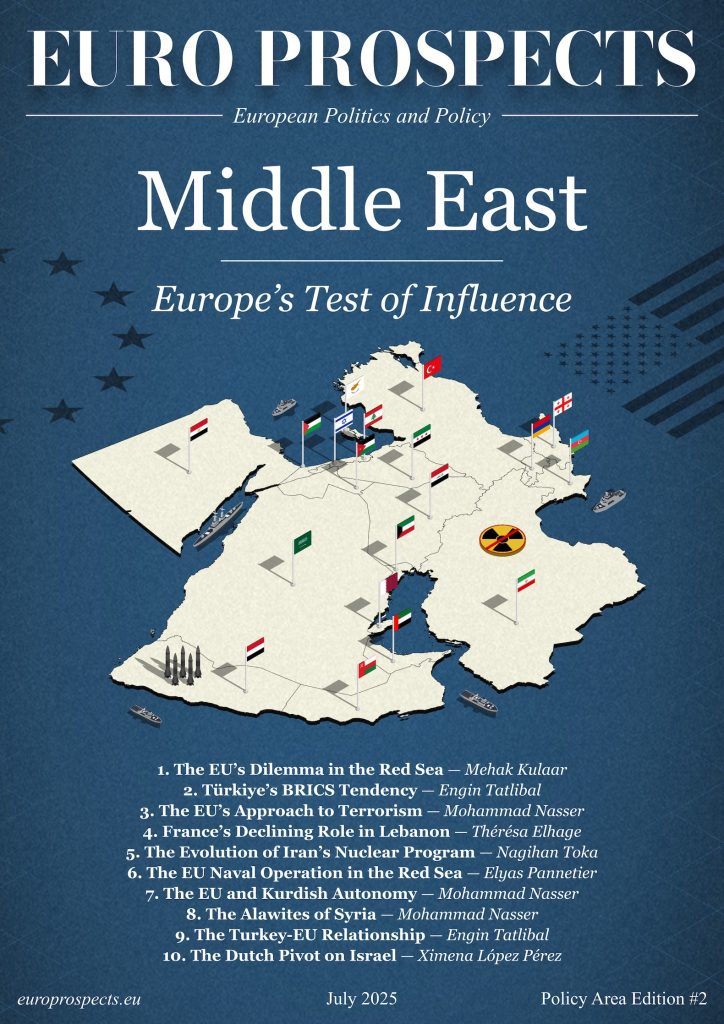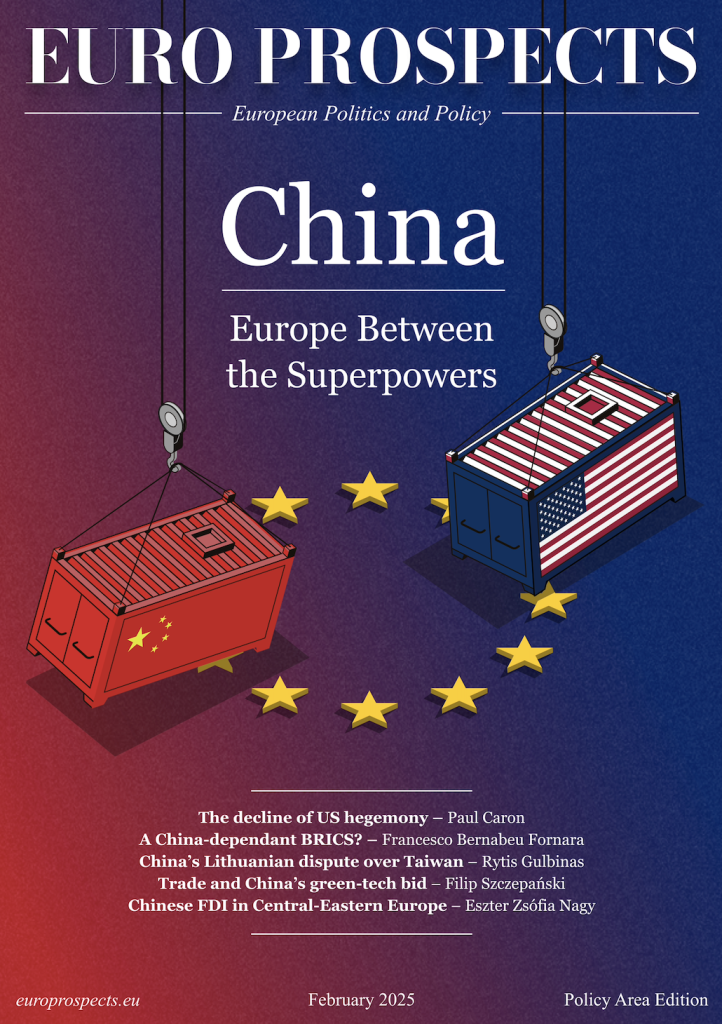8 min read — Analysis | The EU at a Crossroads (series)
The EU's Post-Brexit Institutional Framework: The EU at a Crossroads (Part 4)

By Nathaniel Thomas Carrier
First published: 2020 | Electronically published: March 10, 2023 at 17:30
The Post-Brexit Institutional Framework of the EU
This third and final chapter of this dissertation is perhaps the most important. Here, the most recent dilemma’s—Brexit and the COVID-19 global pandemic—will be analysed and discussed. These two events have already had effects on the stabilisation of the Union, but what forms of destabilisation have transpired? As mentioned in the introduction, the following questions will be discussed and answered: Will the Union continue to work towards an ever-more integrated Union? What are the effects of the global health pandemic in the EU? What will be the structural effects on the Union caused by Brexit? Certainly, these events will have consequences, not only structurally, but also sociologically. As another matter of importance and what has been mentioned several times throughout this dissertation is the cruciality of discussing these complications, for it is these discussions that are truly meaningful.
3.1 – Brexit and the Future of the EU
As is known, in 2016, the people of the United Kingdom (UK) voted by referendum to leave the EU. Since then, this divorce has taken many shapes, marking an end to the UK’s EU membership since their referendum to join the European Community in 1973. Although, the 2016 referendum was not the first nation-wide vote on the matter of EU membership, as the British people voted on the same matter in 1975, determining their future relationship with the European Community. However, first, it is important to mention that “…there is no ready-made ‘theory of Brexit’ on which to base an assessment of its likely effects on cohesion within the UK or the prospective evolution of the approach to social policy”.
While the nature of the topic is still developing, it is still possible to determine the potential effects of Brexit on the EU integration project and other EU matters. One concern, voiced by Lisa ten Brinke, Julia Himmrich, Nicola Chelotti, and Benjamin Martill in a policy brief Britain in the Post-Brexit European Security Architecture, is that of the EU and its Member States on the “…struggle to comprehend the value of global Britain, since Europe’s geopolitical challenges—border tensions and fears of American isolationism—will likely require a stronger European defence and security capability”. Central to this concern is the EU’s anxiety over losing the UK’s military assets, resulting in a loss of diplomatic influence since the UK was seen as one of the largest security providers in the Union.
While the EU is at a loss when it comes to losing the UK in these matters of security, hope remains in the form of the Permanent Structured Cooperation (PESCO). Although the UK did not ratify this agreement, since they had already begun the procedure of leaving the EU before its ratification by most Member States in 2017, its possibility of becoming a ratified policy agreement was stronger due to the UK’s departure. Without the opposing voice, the EU successfully passed the agreement, furthering the Union’s defense package together with the Coordinated Annual Review on Defence (CARD) and the Military Planning and Conduct Capability (MPCC). In this case, security and defence policy does not seem to be an issue. Although, if the Union is to hold its strength in diplomatic influence, “…the Union should be keen to enter into informal cooperation with the UK in this domain. This arrangement would also suit the UK well, since it seeks a flexible arrangement that goes beyond existing third-country structures”.
Another important matter of a post-Brexit EU, integration in defence policy, is one that is a most divisive subject between Member States. In this subject, President Macron has called for a defense union, stating the following:
I thus propose to our partners that we host in our national armed forces – and I am opening this initiative in the French forces – service members from all European countries desiring to participate, as far upstream as possible, in our operational anticipation, intelligence, planning and support. At the beginning of the next decade, Europe needs to establish a common intervention force, a common defense budget and a common doctrine for action.
Certainly a defense union of this sort brings, yet again, the question of national sovereignty. Federalisation of the Union in terms of defence divides the Union in a way that can destabilise itself, ultimately, halting any progress for further integration. However, this does not mean that the discussion of a defense union is not important. The departure of the UK from the EU leads the Union down a path of the need to strive for closer cooperation in all matters of security and is something that should not be overlooked by Member States. Initial research suggests that the most important institutional challenge for the EU is in fact that of security and defense. Hence, in the aforementioned text, defence policy has taken a central role to the future of the Union. However, one other area of potential impacts on the functionality of the Union caused by Brexit is the probability of the EU continuing its path towards an ever-closer
Union. Without question, the Union will still continue its current path of deeper integration and its attempts to strengthen the European Parliament (EP) and the European Council (EUCO), but what shape will this take?
Francis B. Jacobs in the book The EU After Brexit, addresses the impacts of Brexit on the Union’s institutional structures such as the Council, the EUCO, and the EP. To begin, he mentions that though Brexit will have limited impact on voting within the Council and the European Council, its effects on power relationships within the Union are potentially more important. Specifically, the Qualitative Majority Voting (QMV) mechanism will be affected by the UK’s departure, creating a double majority in the mechanism. According to Jacobs, the two conditions of QMV—55% and at least 15 of the members of the Council and 65% of the population of the EU—will need revision. The first condition will probably be unchanged in practice, although 55% of 27 rather than of 28 member states is closer to 14 rather than 15. To change this figure of 15, however, would require a modification of the treaties”. The second condition, though, is perhaps more complex now, since the UK was the Union’s third most populous Member State.75 However, regardless of the QMV implications from Brexit, Jacobs notes that any changes to the mechanism would be minor. But what of the balance of power implications from Brexit in the European Parliament (EP)? Currently, larger Member States are underrepresented, while smaller Member States are overrepresented, such are the requirements of EU treaties, it does not seem to follow the notion of fair and equal representation across the Union. As a result, this can further the problem of an EU legitimacy deficit as indicated in chapter one. Any changes to the EP must be in compliance with the treaties, though, for maximum results and to lead the Union into a space of relative legitimacy, treaty amendments should be made.
In agreement to the aforementioned statement, Robert Kalcik and Guntram B. Wolff in Is Brexit An Opportunity To Reform The European Parliament?, recommend a treaty amendment to reallocate the UK’s 73 seats in the EP to the remaining Member States, ensuring a substantial decrease in inequality and achieve a considerable amount of electoral equality. However, it is worth noting that these changes have not been made and are unlikely to ever be implemented. After the UK’s departure from the EU, only 27 of these seats were reallocated to other Member States. Whether this reallocation of seats has had an effect on EU legitimacy is still yet to be known. It would be unfair to use the basic principles of state legitimacy to measure the legitimacy of the EU, since the Union is only economic in practice and not a political one.
Though, for the purposes of this dissertation, a hypothetical conception that the EU is a political union can be used. If this be the case, the Union would need to ensure the equal representation of all of its citizens through its parliament. However, because only 27 out of 73 seats were reallocated to the remaining Member States, a democracy deficit still transpires. For example, five of the 27 reallocated seats were given to France, a Member State that already holds a large number of seats in the EP. Other smaller Member States such as Sweden and Austria, received one reallocated seat, putting their total representative seats to 21 and 19, respectively. As to ensure fair representation within the Union, the 27 seats should have only been reallocated to the Member States with the smallest population sizes; giving more power to the underrepresented peoples in the EP. However, even knowing that the EU is not a political union, it still proves important to entertain the idea of ratifying European constitutional reform. While a treaty to create a European Constitution has been drafted, no such constitution has been written and does necessarily invoke reform or legitimacy. This brings the scope of the impacts of Brexit to a new level: does the event require European constitutional reform or a single European Constitution?
Federico Fabbrini in, Brexit and the Future of Europe: Opportunities for Constitutional Reforms?, addresses this matter. While he does not mention the prospect of drafting a European Constitution, he does however, reflect on the constitutional reforms needed within the Union’s treaties to cope with Brexit. Such reforms include the EP and the EUCO, as were already discussed in the aforementioned text. Fabbrini, though, discusses the idea of a multi-speed Europe, stating that “…since Brexit several national governments have re-invoked the idea of multi-speed integration with a new streak, namely as a way to overcome deadlock in the EU system.” While many Member States have reinstated the idea for multi-speed integration, it is worth noting that this idea is not favourable among all Member States. “The government of Croatia has openly spoken against it, and Poland – reflecting a widespread view in Central and Easter Europe – has vigorously opposed it”.
Unclear, is the reasoning behind the rejection of a multi-speed integration method, however, what is most important is that it is another example of how there exists a gap between institutional reform and EU legitimacy. For it is not the purpose of this dissertation to ascertain whether a multi-speed integration method would work, but to reflect on the very idea of the method and how individual Member States react to it. As mentioned in the beginning of this dissertation, the Union derives its legitimacy from the Member States who consist of it. By extension, if Member States are conflicted on the ideas of how t he Union is to integrate, legitimacy lacks. For as long as the EU has existed, controversies and disagreements of how to integrate have also existed. Though, when it comes to the ideas of reform, Member States, while not legally bound to comply with the proposed ideas of reform, it is still crucial that the ideas are thoroughly considered without strife.
Concluding, this subsection has analysed the effects of Brexit on the institutions of the EU, but also how institutional reform is robustly discussed in the need to ensure maximum functionality of the Union. Moreover, Brexit means that Europe herself i s finally being discussed in the form of supranationalism vs. intergovernmentalism.
3.2 – COVID-19 and its Impact on EU Synergism
Due to the ongoing nature of the COVID-19 outbreak, this subsection will focus solely on the ways individual Member States have reacted to the pandemic, as well as the general EU response. This will determine if the Union has acted with cohesion to the outbreak and its subsequent consequences to the future of European integration.
The COVID-19 global health pandemic has devastated economies, social cohesion, and job security all over the world. Nations raced to close their borders and implement social distancing guidelines, often pointing blame at the World Health Organisation (WHO), such as
the United States has done. While in the EU, “…member states revealed a remarkable lack of coordination, with some countries unilaterally suspending the intra-EU export of medical devices, or introducing intra-EU border checks, also on goods – in blatant disregard of EU law.” A particular example of Member State response extremism was with the case of Hungary. Prime Minister Viktor Orbán seemed to take advantage of the pandemic, persuading the Hungarian parliament to adopt legislation that allowed him to rule indefinitely by decree — “…codifying into law authoritarian governance”. Unsurprisingly, this act did not go unnoticed by MEP’s, with some saying that the “…emergency measures to address the coronavirus crisis should be temporary and time-limited to allow for checks and balances”.
Though, soon after the pandemic began, the EU began to develop a response by focusing heavily on socio-economic consequences. By focusing mostly on the Member States affected worst by the pandemic, the European Investment Bank (EIB) approved a plan to allocate 40bn€ to small and medium-sized businesses. To little effect, the Union now seems to be in a major north-south divide, with some Member States like France, Italy, Spain, and Portugal to call on the European Council President to begin work on a common debt relief plan that would benefit all Member States. The opponents—notably, the Netherlands and Germany—would rather use the ESM as a better tool for a response to the pandemic. However, as a part of the fiscal economic policy response, which will be conducted in three phases, it is phase two that is most interesting and may have the most adverse effects.
“Phase 2 will be about solvency support. As the lockdowns continue, firms must take on increasing amounts of debt and draw on equity reserves to meet their working capital and investment needs”. With phase two based primarily on national fiscal policy, the “…differences in state-aid disbursements and other support during phase 2 could well leave lasting marks as countries take different and uncoordinated decisions, whether because of fiscal space or preferences”. Most of all, however, the COVID-19 global health pandemic has exposed the unprecedented lack of coordination techniques in the EU. Member States have turned to protectionist measures like that of the age old nation-states. But as the lockdowns continue and the social cohesion changes, the effects of the pandemic are only just starting to unfold. It is now up to the determining factors of time that the Union will learn from its choices made.
3.3 – Conclusion
This chapter, by way of analysing the effects of Brexit and the COVID-19 global health pandemic, has shown that the Union is in need of reform. The lack of coordination and the disparages between the north and the south and the east and the west exposes what the Union already knows: that institutional reform is the answer to its lack of legitimacy. What initial research has shown is that there may not be a single cause for the aforementioned gap.
In the first subsection of this chapter, recommendations made by President Macron in the face of Brexit to ensure a unionised effort to stabilise the EU’s security and defense policy is one example of the Union’s efforts to continue integration. But the recommendation also
exposes the differences between Member States and what they see as an ever-closer Union. The subsection has also brought to light further the parliamentary crisis the Union faces, even when efforts are made to ensure a fair and equal system of voting.
The second subsection of this chapter is written with much forecast, as such is the future effects of the global health pandemic. What is known, however, is that if the Union continues its path of a lack of coordination, disintegration of the Union is only that much more likely. As bold as a statement as that may be, it is only written as so in the effort to explain that, once again, the discussions made in this subsection are inherently meaningful and will determine the future of the European integration project.
Write and publish your own article on Euro Prospects
Subscribe to our newsletter – stay informed when we publish articles on pressing European affairs.

